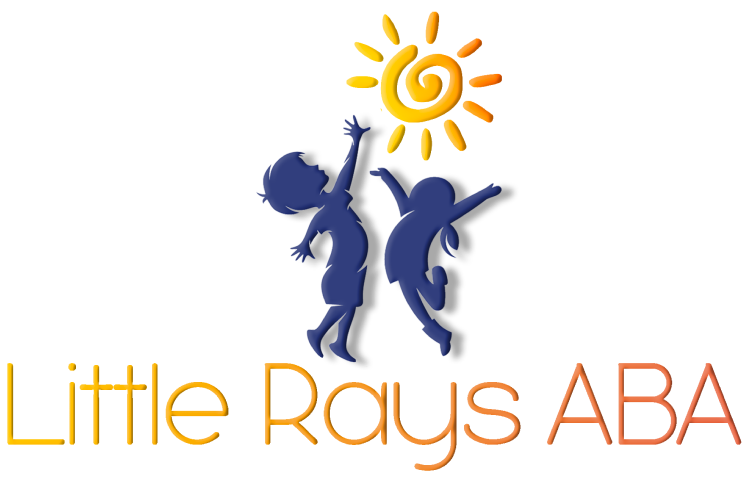Applied behavior analysis (ABA) is a widely recognized therapy that focuses on understanding and changing behavior. A key concept within ABA is stimulus transfer control, which plays a vital role in helping individuals apply learned skills and behaviors in different situations. This blog post will explore stimulus transfer control in ABA therapy, examining its importance, techniques, applications, and challenges. By understanding this concept, we can better support individuals in achieving meaningful and lasting behavior change.
Exploring the Basics of Stimulus Transfer Control
In essence, stimulus transfer control refers to the process of enabling individuals to respond to different but related cues or stimuli in a consistent manner. For instance, if a child learns to identify a red apple, stimulus transfer control helps them identify red strawberries or red cars as well. This ability to generalize learned information is crucial for adapting to new experiences and environments.
It's important to note that stimulus control transfer does not happen overnight; it's a gradual process that requires careful planning, implementation, and evaluation by qualified ABA professionals.
Defining Stimulus Transfer Control in ABA
Stimulus transfer control, in the context of behavior analysis, refers to the process of teaching an individual to respond to a new stimulus in the same way they have learned to respond to an already established stimulus. Essentially, it's about helping individuals apply learned behaviors in different but related contexts. Imagine a child learning to say "blue" when shown a blue block. Stimulus transfer control comes into play when the child can then say "blue" when shown a blue car, a blue crayon, or the sky.
This process is crucial because it allows individuals to generalize their learned behaviors beyond the initial training setting. Instead of learning a specific response for every possible stimulus, stimulus control transfer enables individuals to identify patterns and make connections, leading to more efficient and adaptable behavior patterns. The desired behavior, then, is not simply the specific response but the ability to apply that response flexibly in response to a variety of related stimuli.
The Significance of Stimulus Transfer Control for Behavioral Adjustments
The ability to transfer learned behaviors to new stimuli is fundamental for successful adaptation and independence. Individuals, particularly those with developmental disabilities, often struggle with this aspect of learning. For them, every new stimulus or situation might seem entirely unfamiliar, hindering their ability to respond appropriately.
This is where stimulus transfer control in ABA becomes crucial. By carefully and systematically introducing new stimuli while fading out initial prompts, therapists can help individuals make connections between different yet related cues. For example, instead of teaching a child to respond only to a specific picture of a cat, ABA therapy using stimulus transfer control would ensure the child recognizes various cat pictures, illustrations, or even real cats.
This approach not only broadens their understanding of the concept but also allows them to navigate various aspects of their lives with increased confidence and independence.
Key Procedures for Effective Stimulus Control Transfer
There are specific procedures used in ABA therapy to facilitate effective stimulus control transfer. These techniques aim to fade the reliance on prompts gradually and seamlessly so that individuals begin responding to natural environmental cues. This systematic approach ensures that learned behaviors are generalized and maintained over time.
Some of the most commonly used methods include prompt fading, stimulus shaping, and generalization training. Each technique involves a slightly different approach to achieve the desired outcome, and the choice of method often depends on the individual's specific needs and learning styles.
The Role of Prompt Fading in Transfer Success
Prompt fading is a key technique used in ABA therapy to gradually reduce and eventually eliminate the need for prompts, allowing individuals to respond independently to the desired stimulus. The goal is to transfer stimulus control from the prompt to the natural cue that should elicit the specific behavior.
Think of prompts as temporary support systems. In the context of stimulus control transfer, these prompts could be:
- Verbal prompts: Providing verbal instructions or cues.
- Visual prompts: Using gestures, pictures, or written words as hints.
- Physical prompts: Guiding the individual physically to perform the desired behavior.
As the individual starts demonstrating the desired behavior more consistently, therapists gradually reduce the intensity or frequency of these prompts. This systematic fading process helps individuals develop independence in recognizing and responding to the target stimulus without relying on external cues.
Implementing Stimulus Shaping for Enhanced Learning
Stimulus shaping is another effective technique used in behavior analysis to help individuals discriminate between different stimuli and respond accordingly. It involves gradually changing the appearance or form of the stimulus while maintaining the desired behavior.
The process starts by introducing a highly distinct and easily recognizable stimulus that reliably evokes the desired response. Over time, therapists make subtle changes to this stimulus, gradually shifting it toward the natural stimulus that should ultimately control the behavior. Throughout this process, it is crucial to reinforce only the desired responses while ignoring or providing corrective feedback for incorrect responses.
For instance, if you're teaching a child to recognize the letter "A," you might initially present them with a large, bold "A" and reward them for identifying it correctly. As they progress, you might gradually reduce the size or boldness of the letter while introducing different fonts or handwriting styles, all the while continuing to reinforce correct responses. This gradual shaping process enables the individual to generalize their learning and recognize the letter "A" in various forms.
Overcoming Challenges in Stimulus Transfer Control
While stimulus control transfer is a powerful tool in behavior analysis, it's not without challenges. Each individual brings a unique set of strengths, limitations, and learning styles, making it crucial for ABA practitioners to be adaptable and resourceful.
Addressing these challenges requires a deep understanding of the individual's needs, consistent observation, and ongoing adjustments to the intervention plan.
Addressing Variability in Response to Stimulus Control
One of the main challenges in stimulus control transfer is addressing the variability in individuals' responses. What works effectively for one person might not yield the same results for another, even if they share similar diagnoses or learning profiles. This highlights the need for highly individualized intervention plans tailored to each person's specific needs and learning styles.
Factors like the individual's age, cognitive abilities, sensory sensitivities, and prior learning experiences play a significant role in how effectively they can transfer learned behaviors to new stimuli. For example, a highly visual learner might benefit from picture cards and visual schedules, while an auditory learner might respond better to verbal instructions and songs.
Moreover, it's also important to consider the environment in which the individual is expected to perform the behavior. By carefully analyzing these factors, behavior analysts can make informed decisions about the most effective techniques and strategies for promoting successful stimulus control transfer.
Strategies for Generalization and Maintenance
Generalization and maintenance are two critical aspects of successful stimulus control transfer. Generalization refers to the ability to apply learned behaviors in different environments, with different people, and with different stimuli. Maintenance, on the other hand, focuses on ensuring the longevity of the learned behavior, meaning the individual continues to exhibit the desired behavior even after the formal intervention has ended.
Here's a table highlighting some common strategies used for promoting generalization and maintenance:
| Strategy | Description |
|---|---|
| Varying settings | Instead of teaching a skill in only one location, practice it in different rooms, environments, or with different people. |
| Using multiple stimuli | When teaching a concept, use a variety of examples. For example, instead of teaching a child to recognize only one type of dog, introduce them to pictures of different breeds. |
| Incorporating peers | Involve peers in the learning process to help generalize social skills and appropriate behaviors in social situations. |
| Fading prompts gradually | Use a consistent reinforcement schedule, even after the individual has mastered a skill. This helps to maintain the behavior over time. |
Employing these strategies helps ensure that the effects of stimulus control transfer are not limited to specific settings or individuals but can be applied across various aspects of their lives.
Conclusion
In conclusion, mastering stimulus transfer control in ABA is crucial for fostering behavioral adjustments and learning. Implementing prompt fading and stimulus shaping techniques can enhance the transfer success, aiding individuals with ASD greatly. Overcoming challenges like response variability requires strategies for generalization and maintenance to ensure sustained progress. By understanding the significance of stimulus transfer control and applying key procedures effectively, you can facilitate meaningful behavioral changes. For more insights on navigating this complex domain or addressing common pitfalls, explore our FAQ section. Stay informed and empowered in your ABA journey.
At Little Rays ABA, we understand that mastering stimulus transfer control is essential for successful skill acquisition and generalization in ABA therapy. Our experienced therapists are adept at implementing strategies that facilitate smooth transitions between different stimuli, ensuring that skills learned in one context are readily applied to others. We prioritize individualized approaches, tailoring our interventions to meet each child's unique learning style and needs. By focusing on systematic stimulus transfer control, we empower children to build a robust repertoire of skills, fostering independence and adaptability. Little Rays ABA is committed to providing expert guidance and compassionate support, illuminating the path towards meaningful progress and lasting success.
Frequently Asked Questions
How does stimulus control transfer benefit individuals with ASD?
Stimulus control transfer is particularly beneficial for individuals with autism spectrum disorder (ASD). Applied behavior analysis (ABA) therapies utilize it to help these individuals learn new skills and respond appropriately to their environment, ultimately improving their quality of life.
What are common pitfalls in applying stimulus control transfer techniques?
Common pitfalls include failing to individualize the type of procedure used for each learner's needs, fading prompts too quickly, and not promoting generalization to various settings. ABA practitioners must be mindful of these pitfalls and adjust their practical applications accordingly for the best outcomes.
Source:
https://www.autismspeaks.org/applied-behavior-analysis
https://www.connectncareaba.com/stimulus-control-transfer-in-aba
https://psychcentral.com/autism/stimulus-control-transfer-aba
https://pmc.ncbi.nlm.nih.gov/articles/PMC4893031/
Unlock Your Child's Potential with Expert ABA Therapy!
At Little Rays ABA, we provide compassionate, evidence-based ABA therapy to help children with autism thrive. Our personalized approach fosters growth in communication, social skills, and independence.
Get In Touch With Us Today to Get Started With ABA Therapy!
Related Posts
MENU
GET IN TOUCH
7117 San Salvador Dr Boca Raton, FL 33433
3200 Collins Ave Miami Beach, FL 33140





